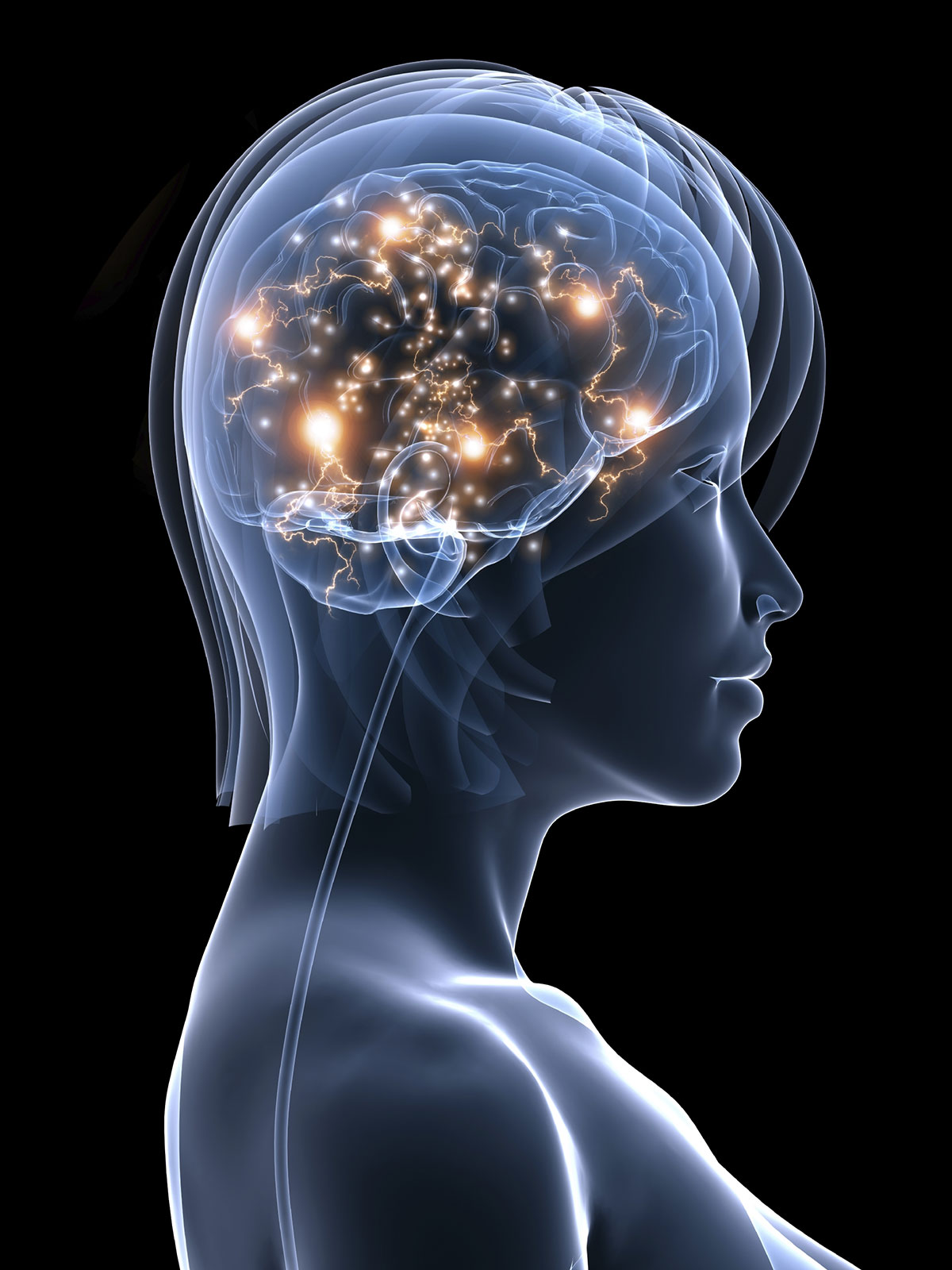
Over the past decade, discoveries in neuroscience have revealed the brain’s amazing capacity for change. This capacity, referred to as neuroplasticity, has become a growing topic of interest in clinical and general science fields. Neurofeedback is an experimental type of therapy that allows neurofeedback practitioners to utilize the principle of neuroplasticity to alleviate brain-related symptoms.
Like other forms of biofeedback, neurofeedback is a noninvasive, experimental type of therapy that has been studied and utilized for over 30 years. Neurofeedback monitors and gently interacts to regulate brainwaves. The nCenter team of neurofeedback practitioners use a variety of neurofeedback approaches, guided by a qEEG brain map, to create a personalized and targeted treatment. One approach to biofeedback dis-entrains the brain, freeing it up from locked patterns and creating more flexibility. Another approach allows our neurofeedback practitioners to entrain the brain by gently applying various frequencies to re-balance and optimize brain function.
Unlike traditional medications, which need to be taken throughout a person’s life, neurofeedback is often time-limited. Some clients see changes after only one session, while others see more profound results following 20-70 sessions. Treatments at our clinics usually last 20-30 minutes, twice per week.
After appointments with our Neurofeedback practitioners, our clients often report:
- Stable moods
- Increased energy
- Better memory retention and access
- Increased environmental awareness
- Personal and emotional sensitivity
- Higher cognitive capacity and function
- Improved coordination, balance, and general body function
Parents and teachers have also noted more flexibility, focus, better sleep, mood, and emotional regulation in children and teenagers undergoing neuro therapy.
Reported Benefits of Neurofeedback
- More Clarity
- More Energy
- Less Fatigue
- Better concentration
- Better present awareness
- Less anxiety
- Less depression
- Less anger
- Better memory
- Better performance
“Neurofeedback should play a major therapeutic role in many difficult areas. In my opinion, if any medication had demonstrated such a wide spectrum of efficacy it would be universally accepted and widely used. It is a field to be taken seriously by all.” — Frank H. Duffy, M.D., Harvard Medical School Professor”
Neurofeedback Treatments

Montana Based Neurofeedback Services
We primarily utilize Neurofield Technology which allows for pEMF, tDCS, tACS, tDCS and tRNS therapeutic approaches. Our neurofeedback practitioners also use the FDA-approved Low Energy Neurofeedback Systems (LENS) created by Ochs Labs. With these treatments potential minor and temporary side effects are: insomnia, headaches, dizziness, and itching or redness under the electrode. These symptoms can last for 24-48 hours after a neurofeedback session, but not longer.
pEMF – Pulsed Electromagnetic Field (pEMF) is a type of neuro therapy that introduces magnetic pulses to the brain. pEMF is passive, and the magnetic pulses focused on specific sections of the cerebral cortex entrains the brain toward the frequencies being pulsed.
tDCS – Transcranial Direct Current Stimulation (tDCS) is another neuro therapy which uses a direct or alternating voltage delivered to the scalp through electrodes. It is believed that positive stimulation during neuro therapy increases neuronal excitability and allows for more spontaneous cell firing. Negative stimulation decreases neuronal excitability and reduces spontaneous cell firing. Transcranial direct current stimulation may function by increasing or decreasing (based on the kind of stimulation) the strength of neuronal connections resulting in better brain function.
tACS – Transcranial Alternating Current Stimulation (tACS) is another safe neuro therapy which applies alternating current through the skull to entrain the brain in a frequency-specific manner. This can gently correct neural oscillations toward the norm during treatment.
tRNS – Transcranial Random Noise Stimulation is a stimulating current that is randomly varied. This neuro therapy’s main effect appears to be excitatory, and it is believed to reconnect certain sites of the brain.
Our Montana practitioners aim to challenge your brain to become more and more efficient!
LENS – Low Energy Neurofeedback System is a passive form of neurofeedback that uses a very low voltage to send feedback which is offset a certain number of cycles per second faster than the brain’s dominant frequency. This experimental form of biofeedback therapy has shown promising clinical results for conditions such as TBI, fibromyalgia, anger, restless leg syndrome, anxiety, depression, insomnia, and others. LENS can also be used for therapy treatments with young children.
MENDI – Neurofeedback Device used to enhance cognitive performance and mental well-being. It employs EEG (electroencephalography) technology to measure brainwave activity in real-time. Users wear Mendi like a headband, and it provides visual and auditory feedback to help them train their brains
During Mendi sessions, individuals engage in mental exercises that promote focus, relaxation, and stress reduction. As they perform these exercises, Mendi’s real-time feedback shows how their brainwaves change. Users learn to control their brainwave patterns by consciously adjusting their mental state.
Mendi is often used to improve concentration, manage stress, and enhance overall mental clarity. By training the brain to achieve specific states of focus and relaxation, it offers a non-invasive and drug-free approach to mental wellness, potentially benefiting individuals seeking to optimize their cognitive abilities and emotional well-being.
NARBIS – Neurofeedback System designed to improve focus and attention by providing real-time visual feedback. It consists of smart glasses equipped with EEG (electroencephalography) sensors that monitor the wearer’s brainwave activity. When the user’s attention wanes or becomes distracted, the glasses’ lenses gradually darken, making it harder to see clearly. As the wearer regains focus and maintains attention, the lenses clear up.
Narbis leverages operant conditioning, training users to consciously control their brainwave patterns to sustain attention. It’s often used to enhance concentration skills and manage attention-related challenges, such as ADHD. By offering a dynamic, biofeedback-driven approach, Narbis aims to improve cognitive performance by encouraging users to stay engaged and attentive during various tasks, ultimately enhancing their productivity and mental acuity.

